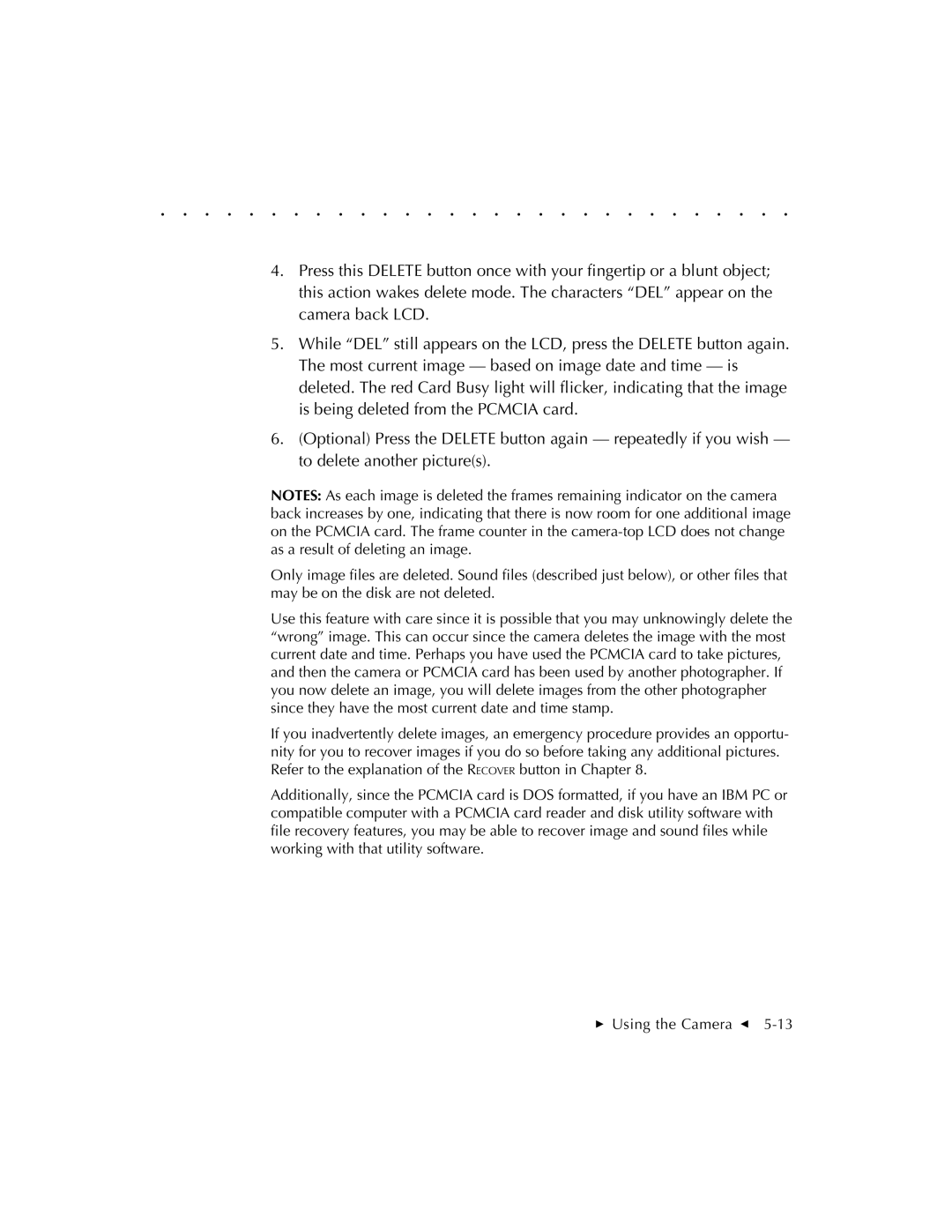. . . . . . . . . . . . . . . . . . . . . . . . . . . . .
4.Press this DELETE button once with your fingertip or a blunt object; this action wakes delete mode. The characters “DEL” appear on the camera back LCD.
5.While “DEL” still appears on the LCD, press the DELETE button again. The most current image — based on image date and time — is deleted. The red Card Busy light will flicker, indicating that the image is being deleted from the PCMCIA card.
6.(Optional) Press the DELETE button again — repeatedly if you wish — to delete another picture(s).
NOTES: As each image is deleted the frames remaining indicator on the camera back increases by one, indicating that there is now room for one additional image on the PCMCIA card. The frame counter in the
Only image files are deleted. Sound files (described just below), or other files that may be on the disk are not deleted.
Use this feature with care since it is possible that you may unknowingly delete the “wrong” image. This can occur since the camera deletes the image with the most current date and time. Perhaps you have used the PCMCIA card to take pictures, and then the camera or PCMCIA card has been used by another photographer. If you now delete an image, you will delete images from the other photographer since they have the most current date and time stamp.
If you inadvertently delete images, an emergency procedure provides an opportu- nity for you to recover images if you do so before taking any additional pictures. Refer to the explanation of the RECOVER button in Chapter 8.
Additionally, since the PCMCIA card is DOS formatted, if you have an IBM PC or compatible computer with a PCMCIA card reader and disk utility software with file recovery features, you may be able to recover image and sound files while working with that utility software.
